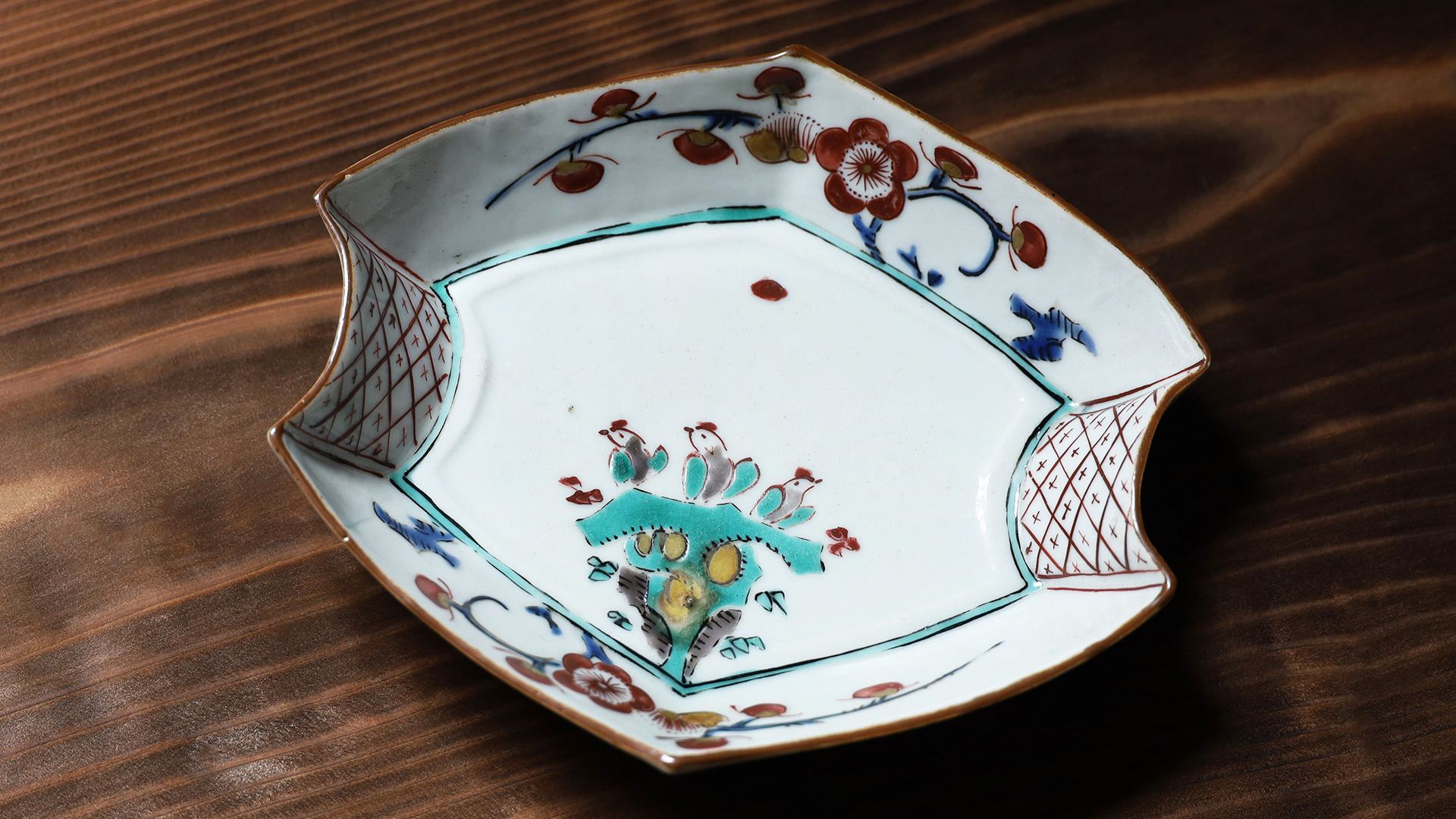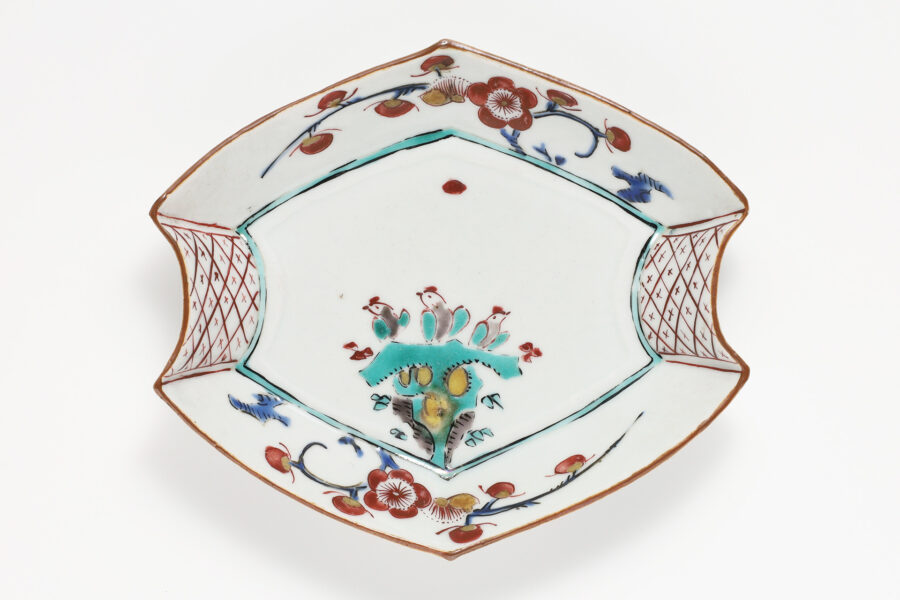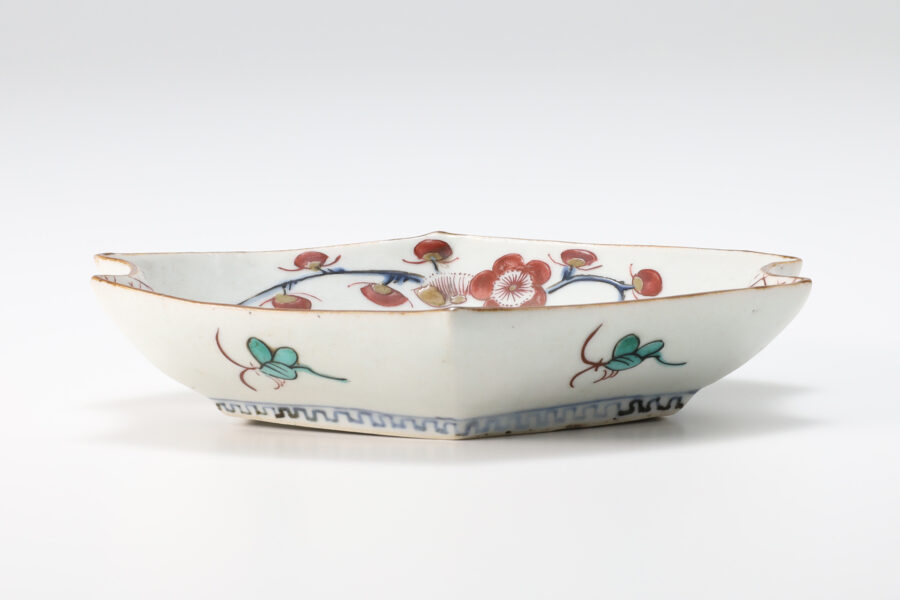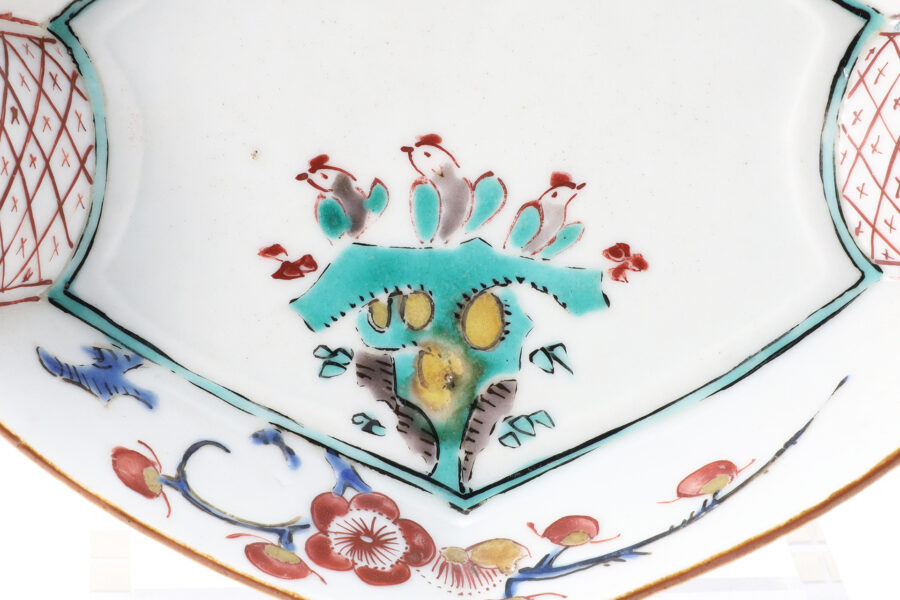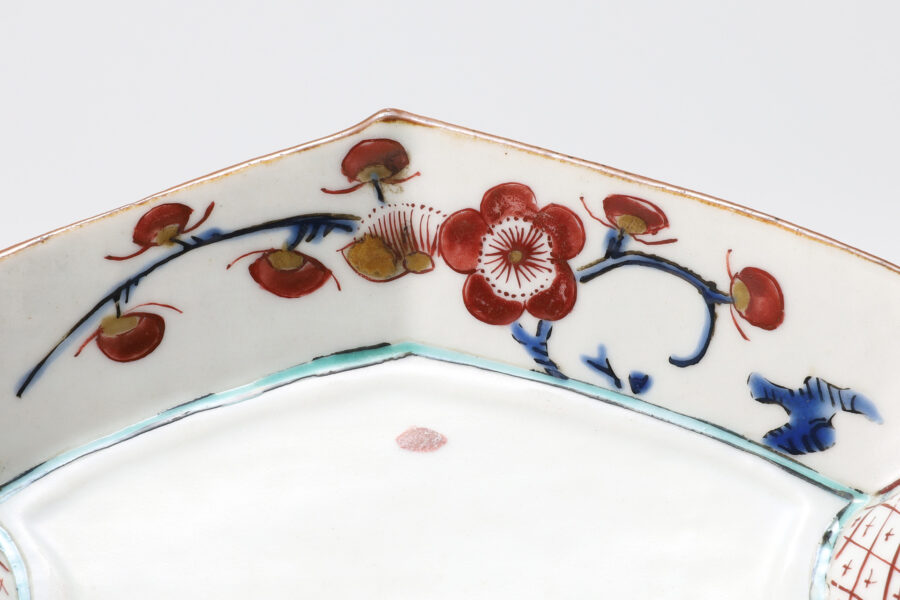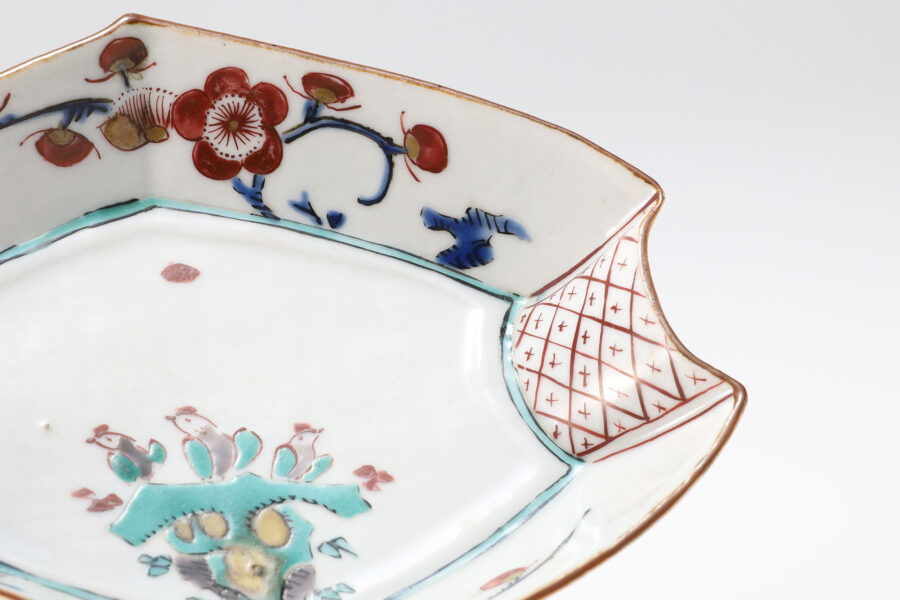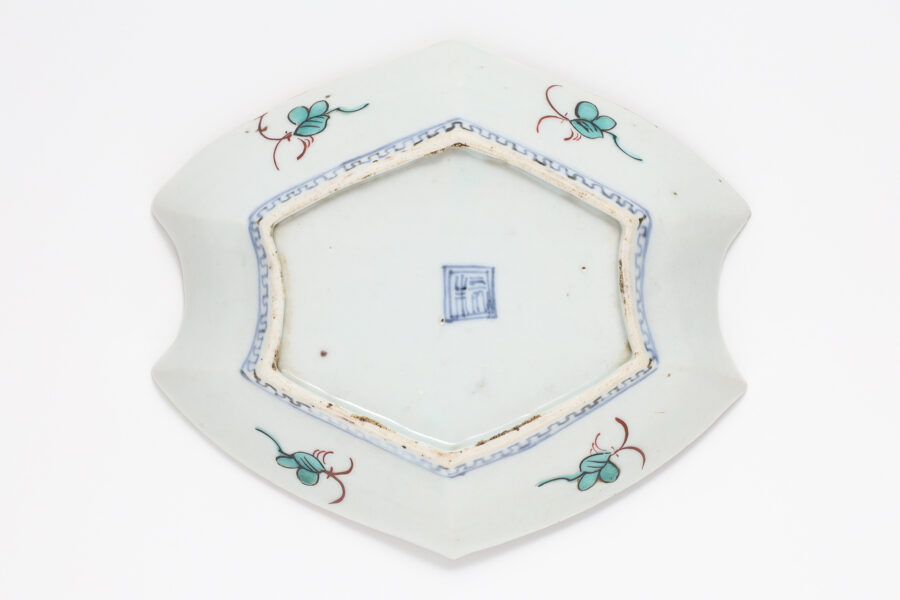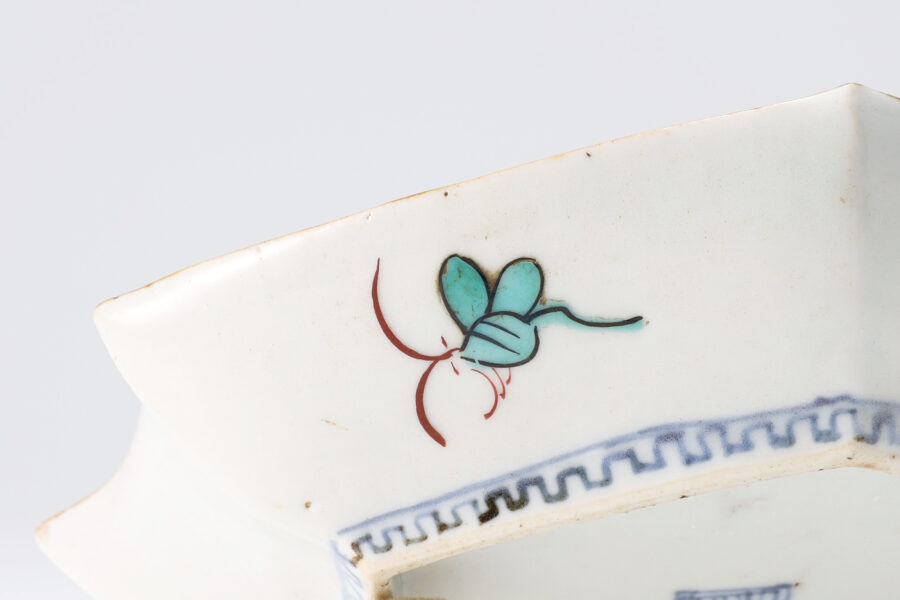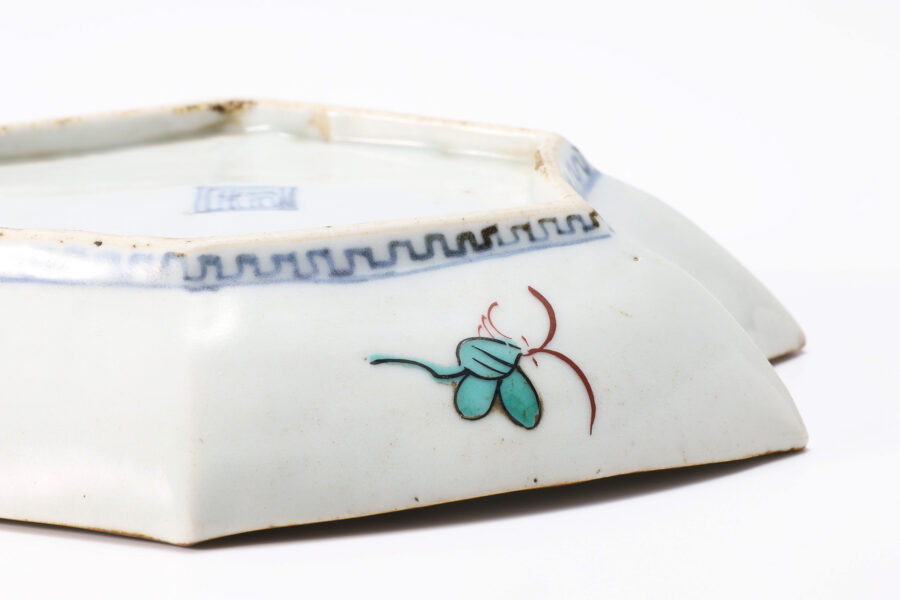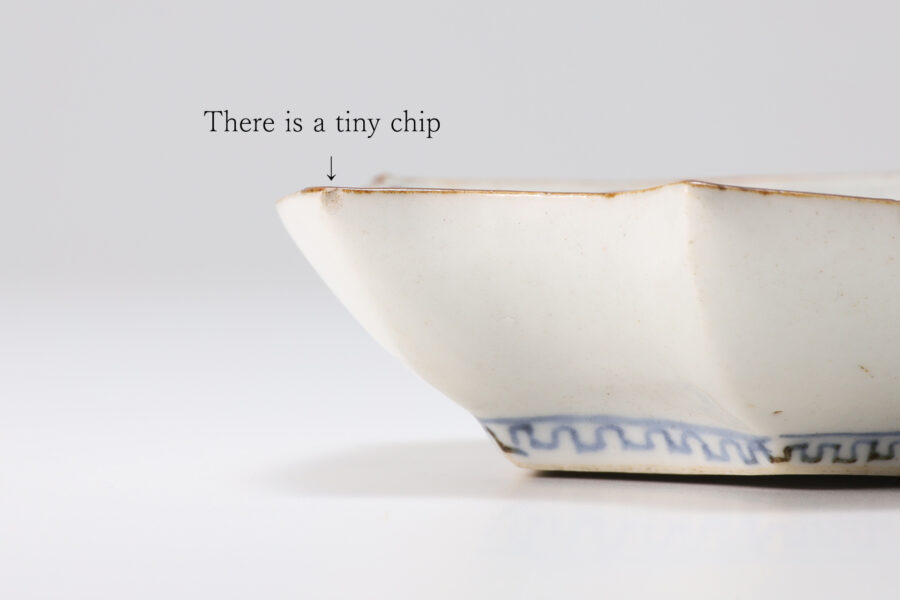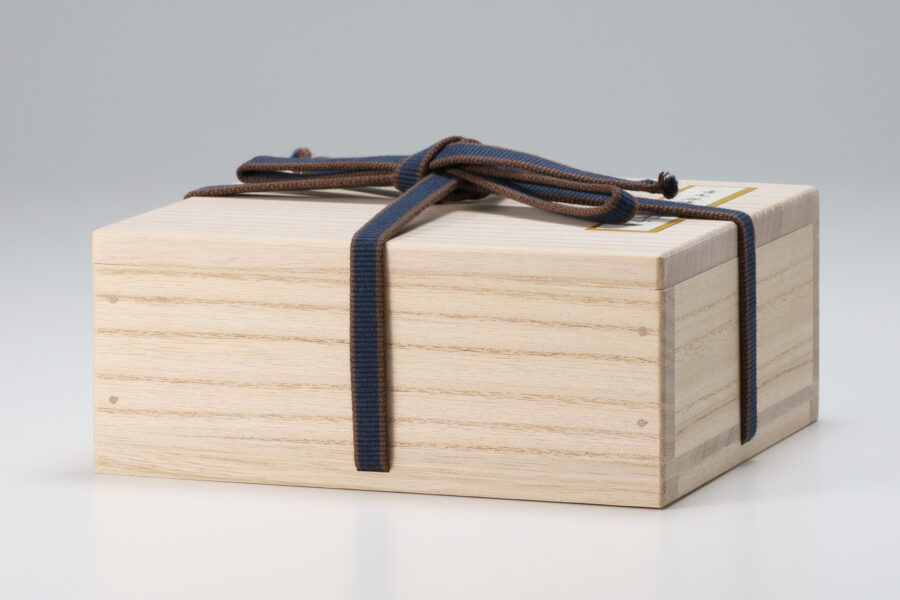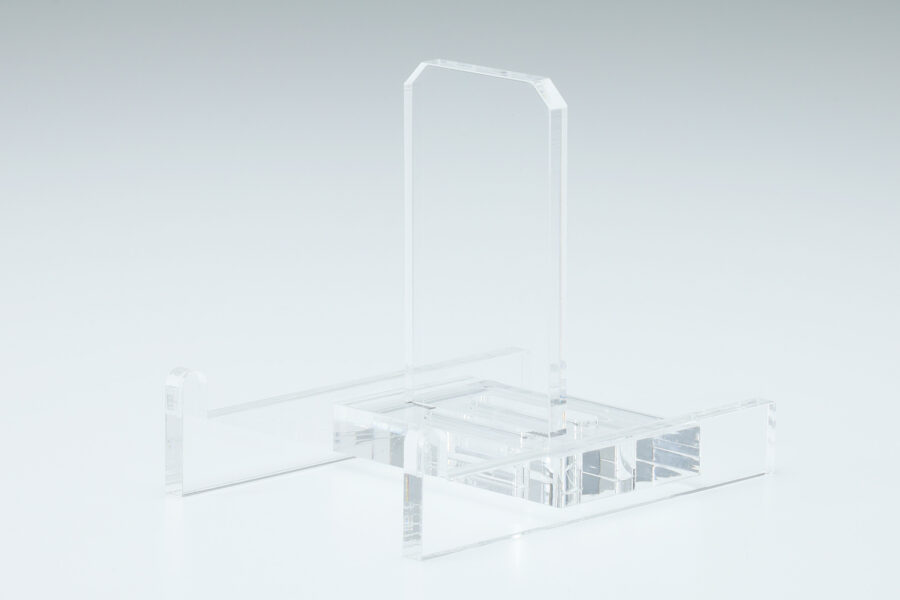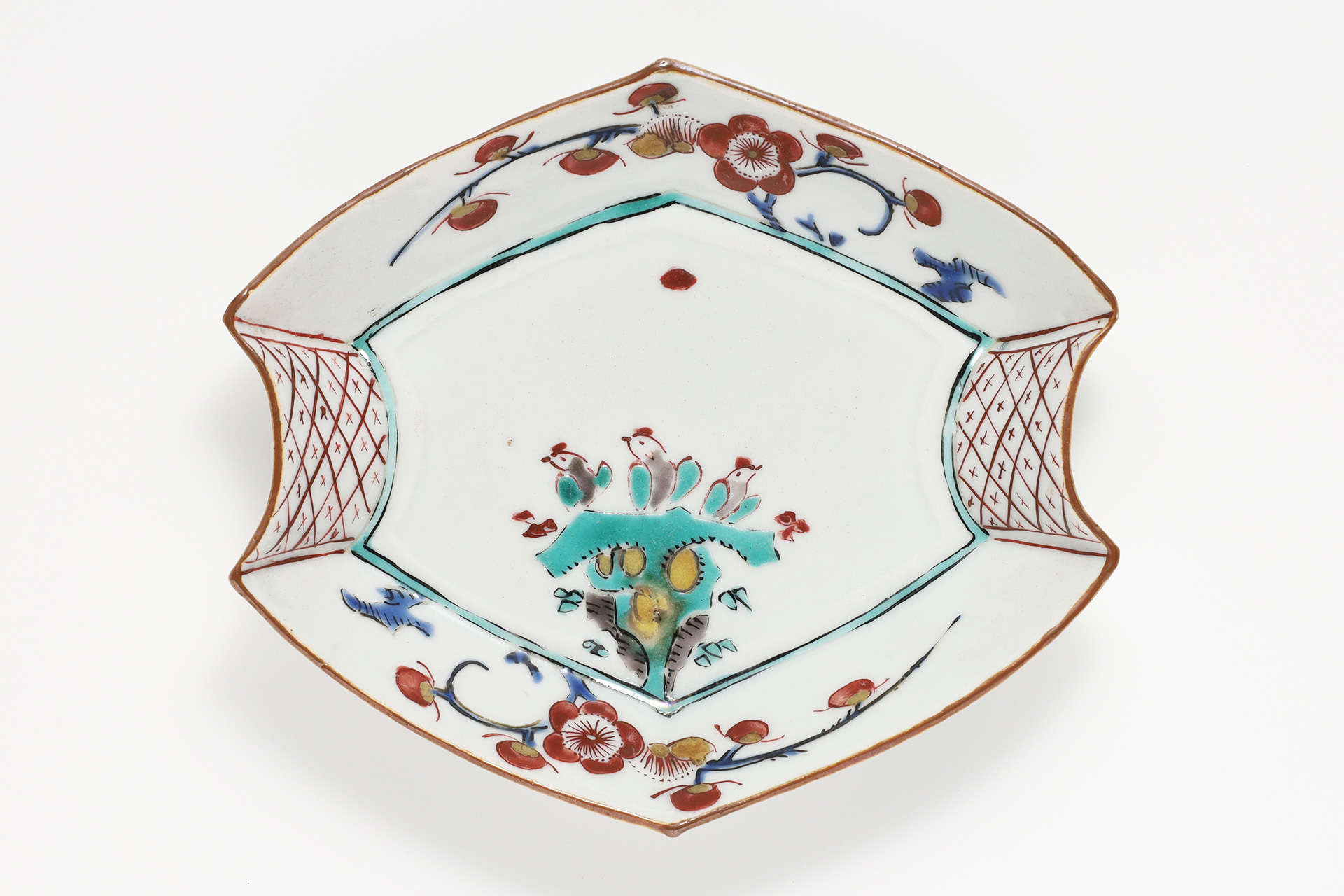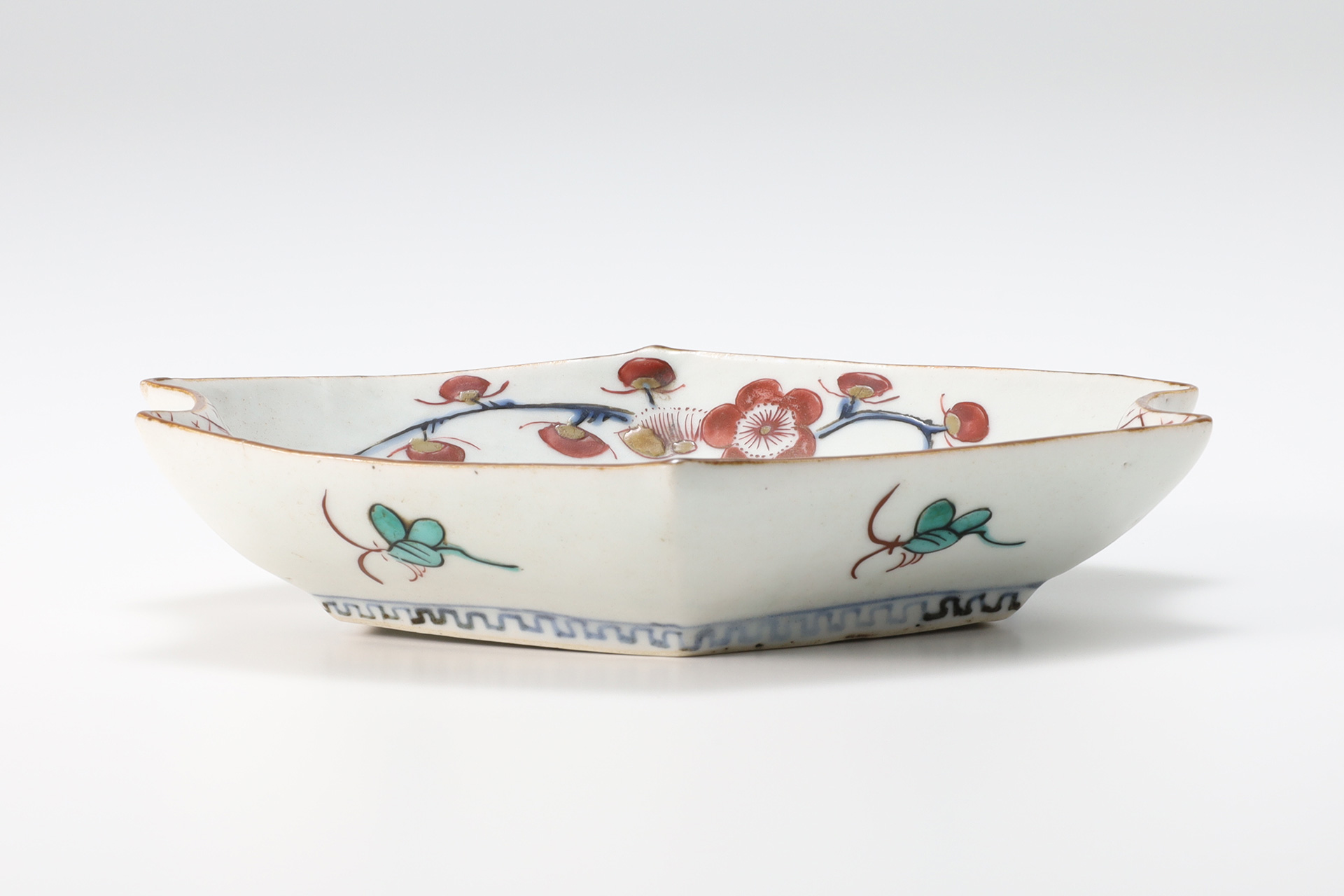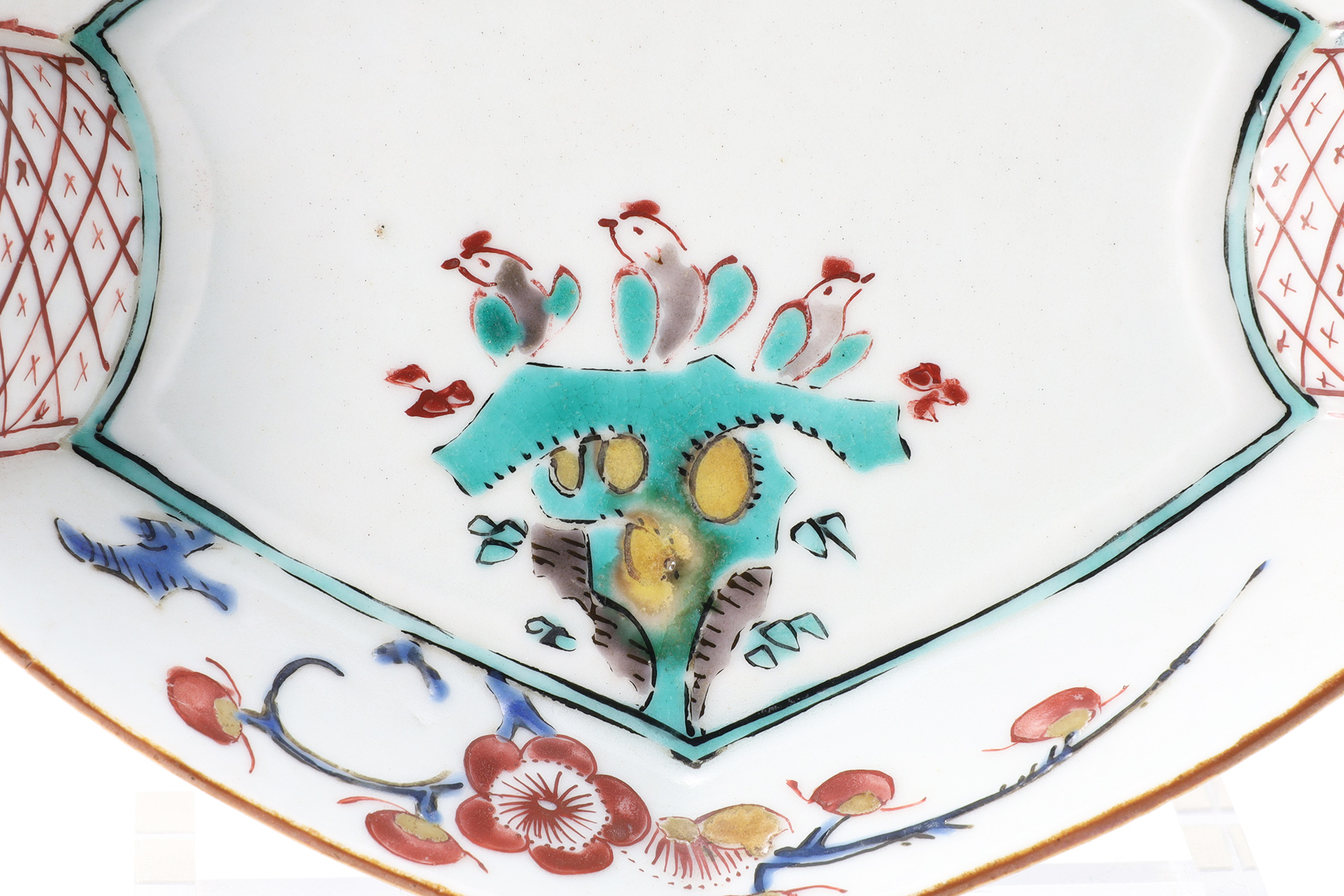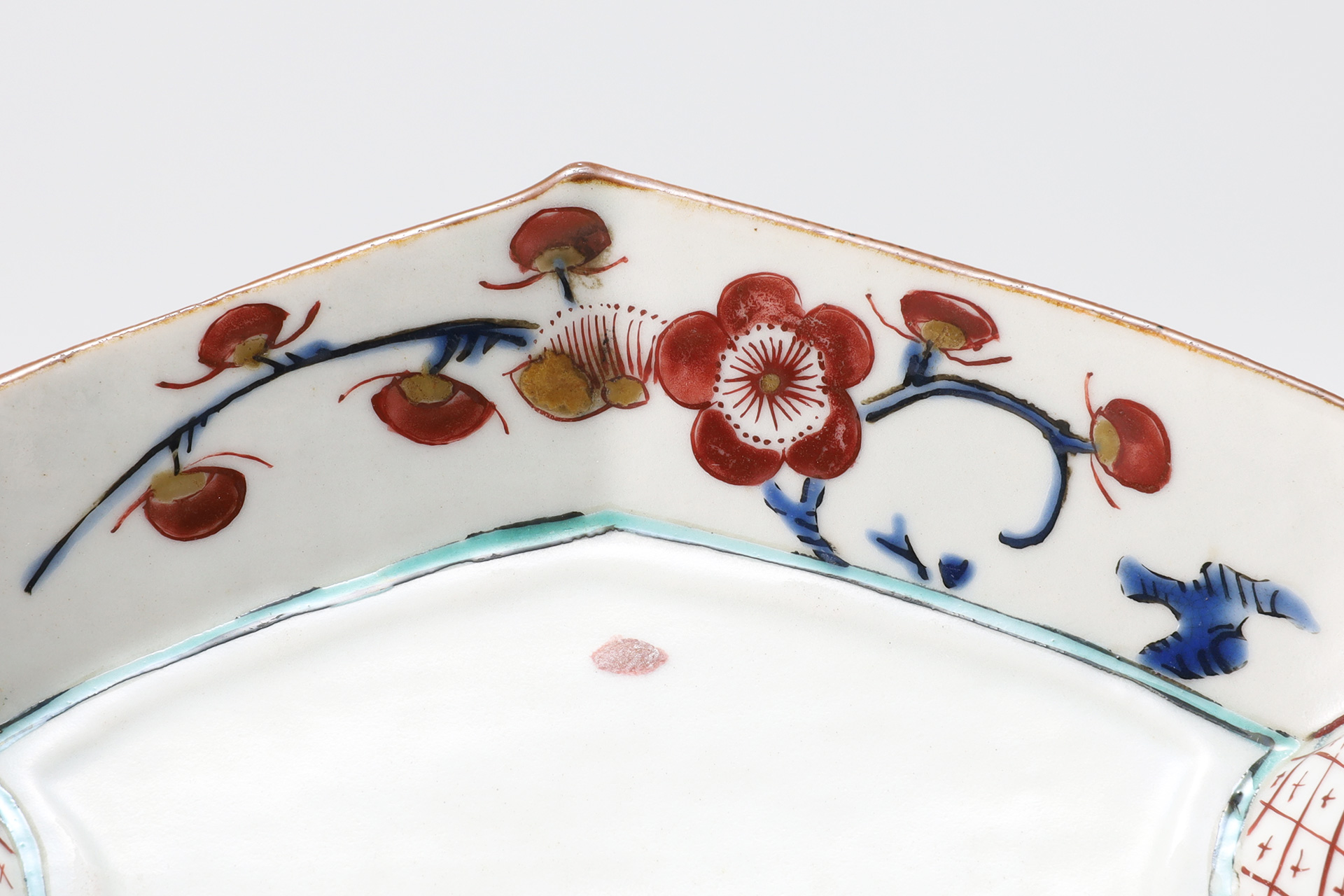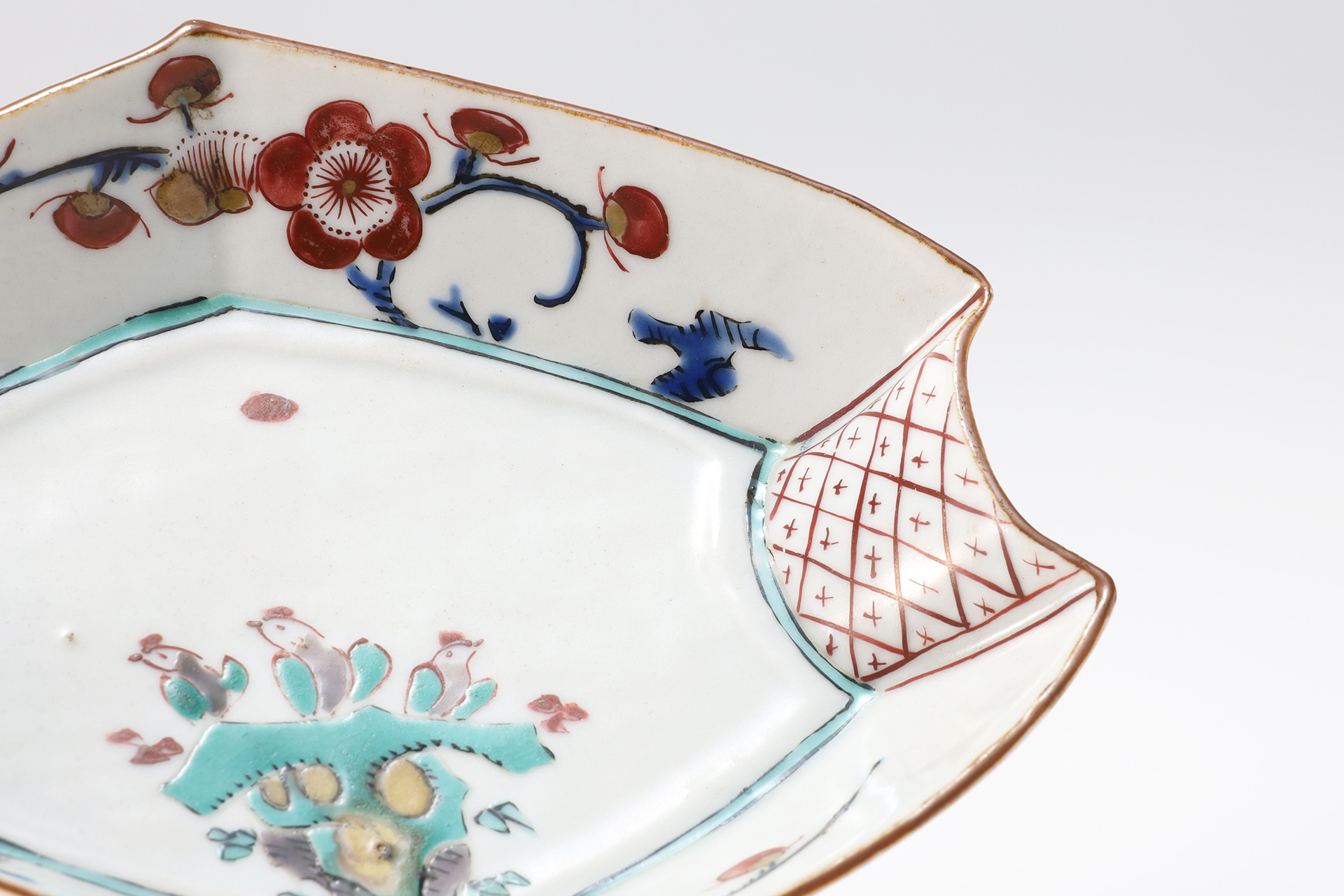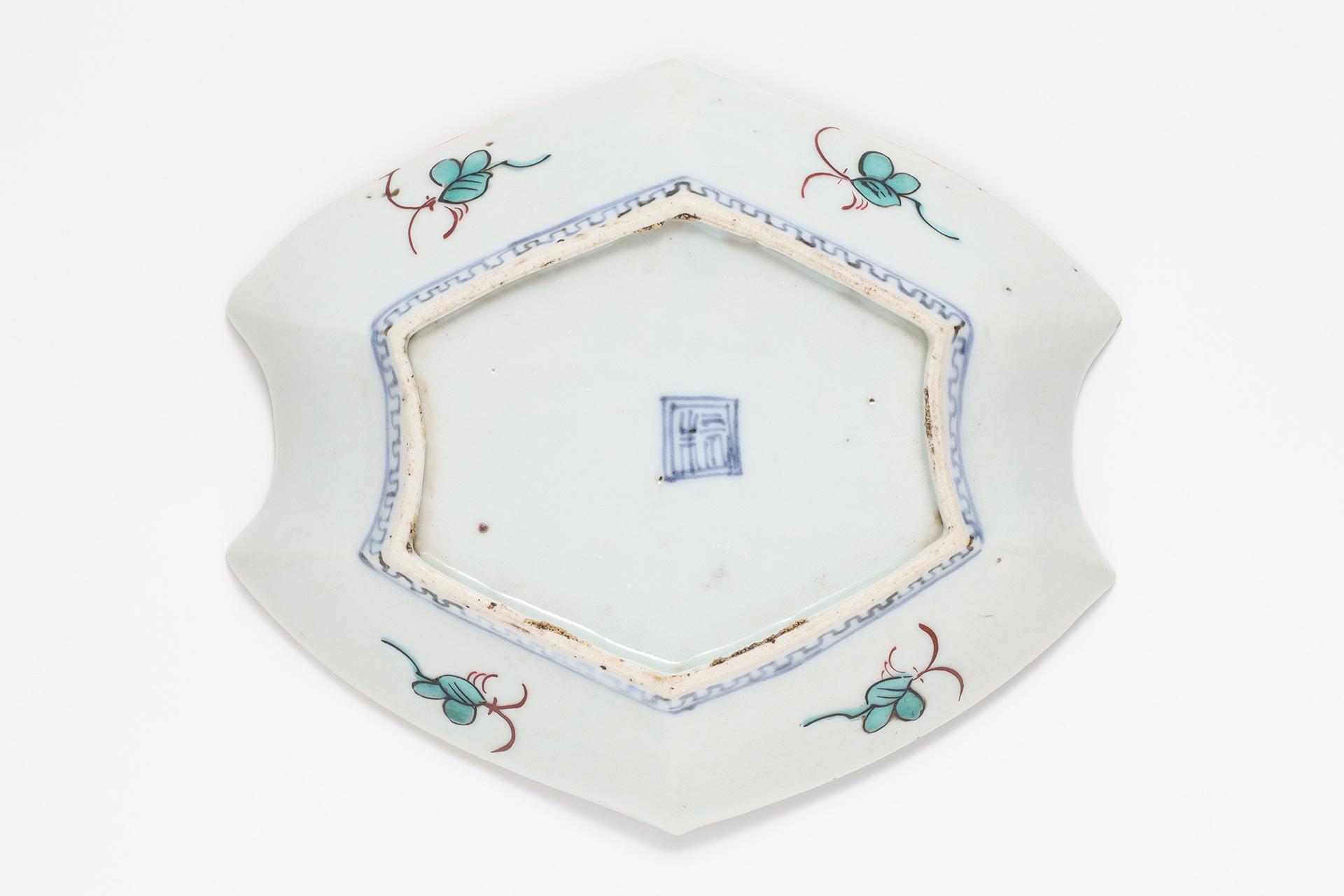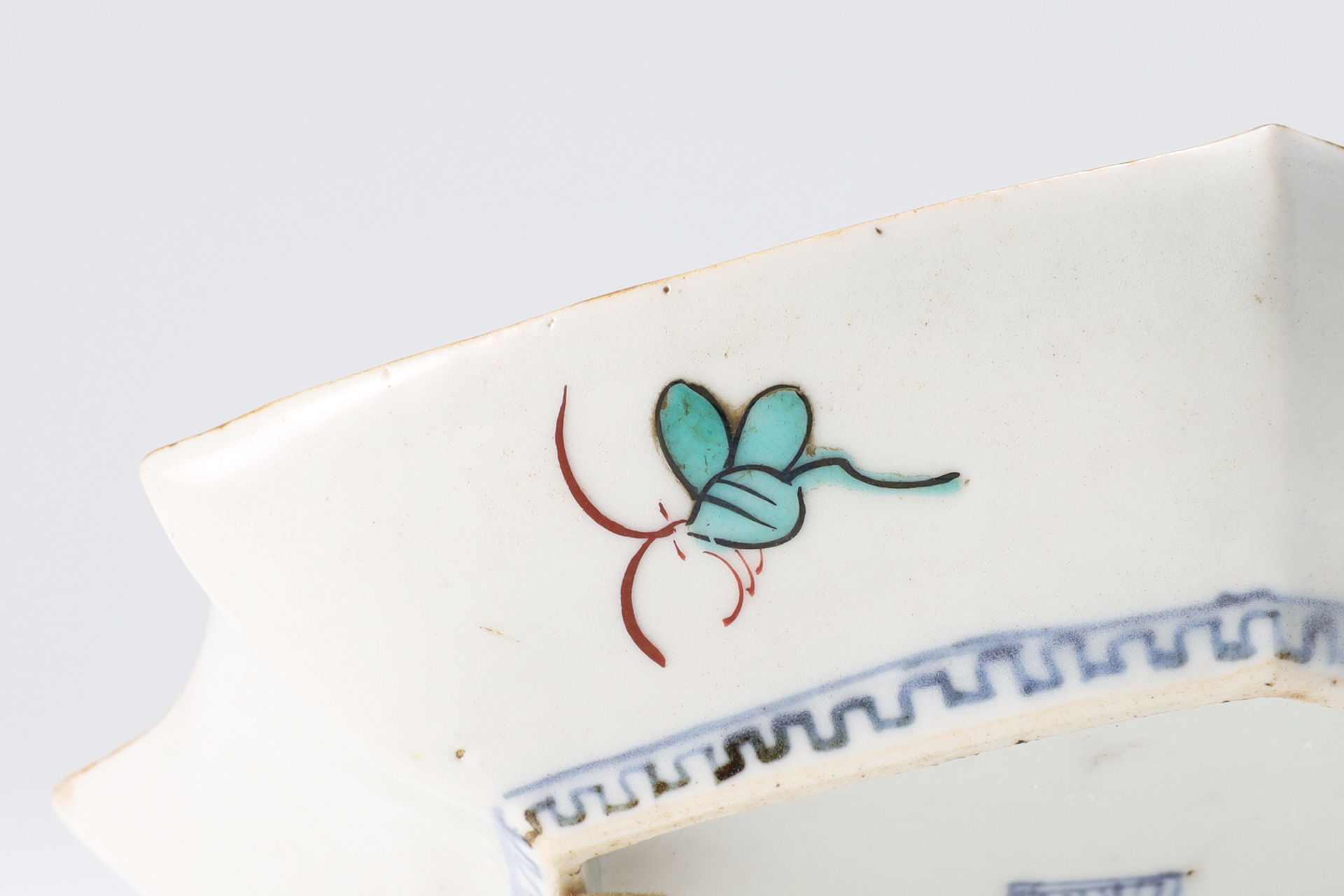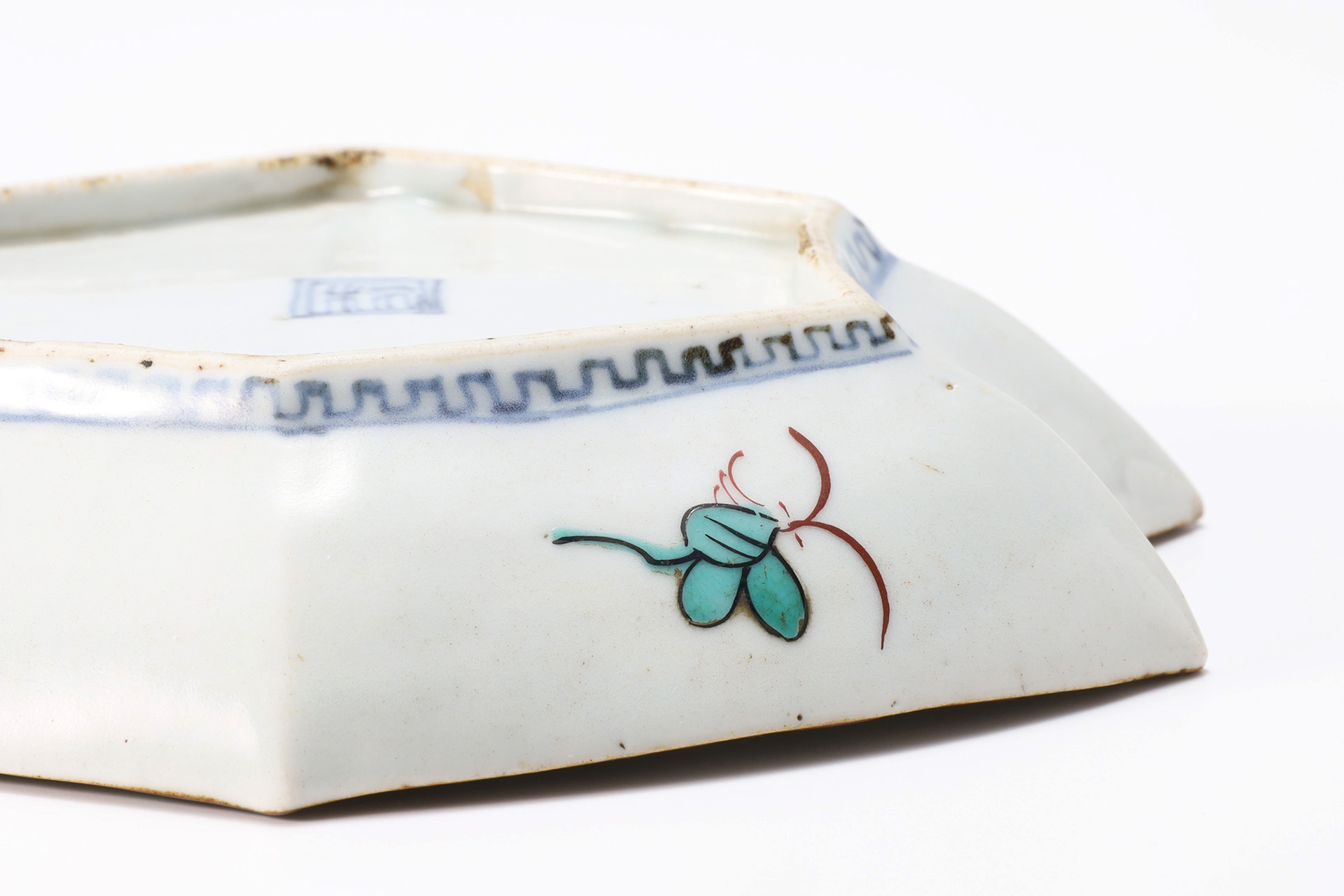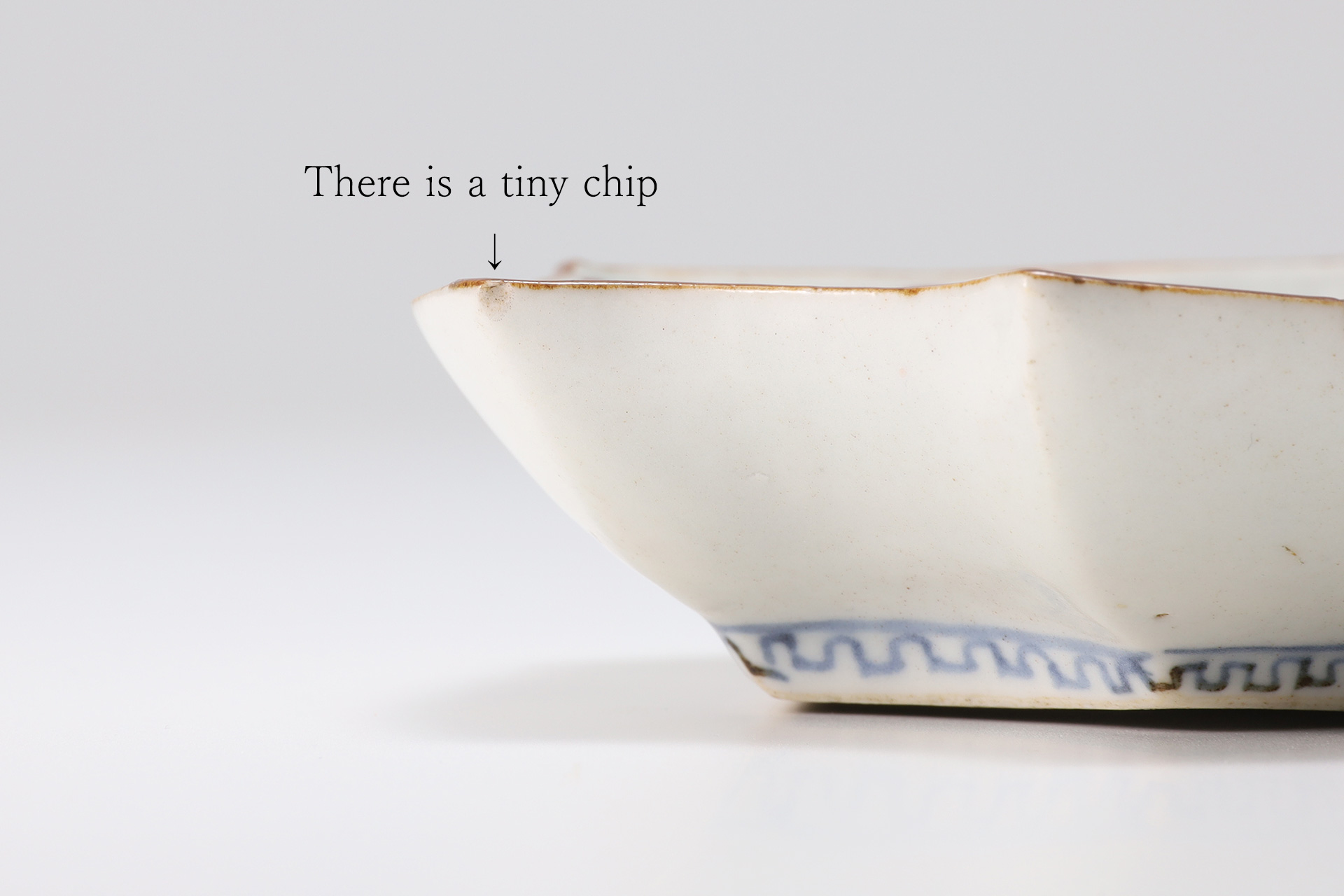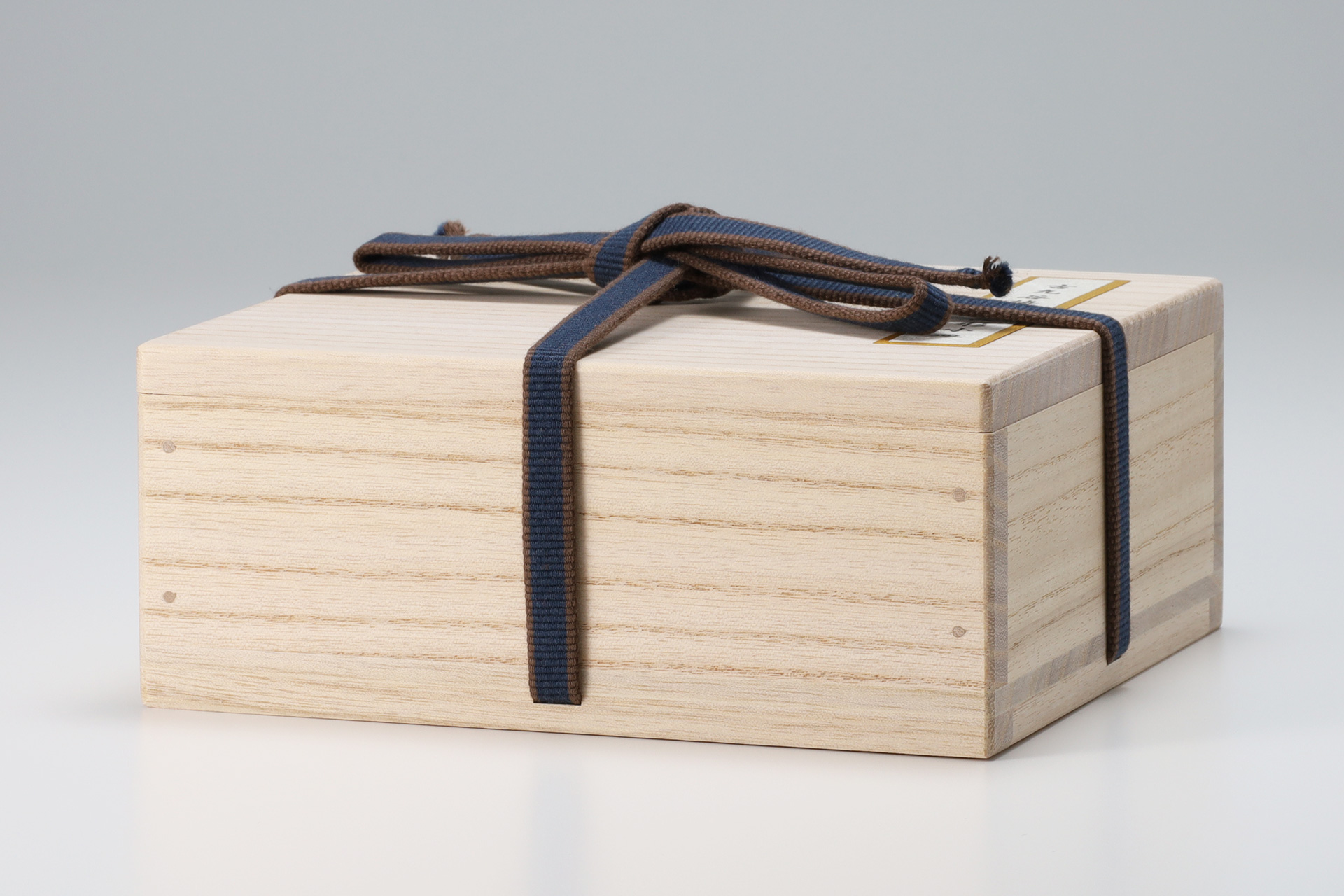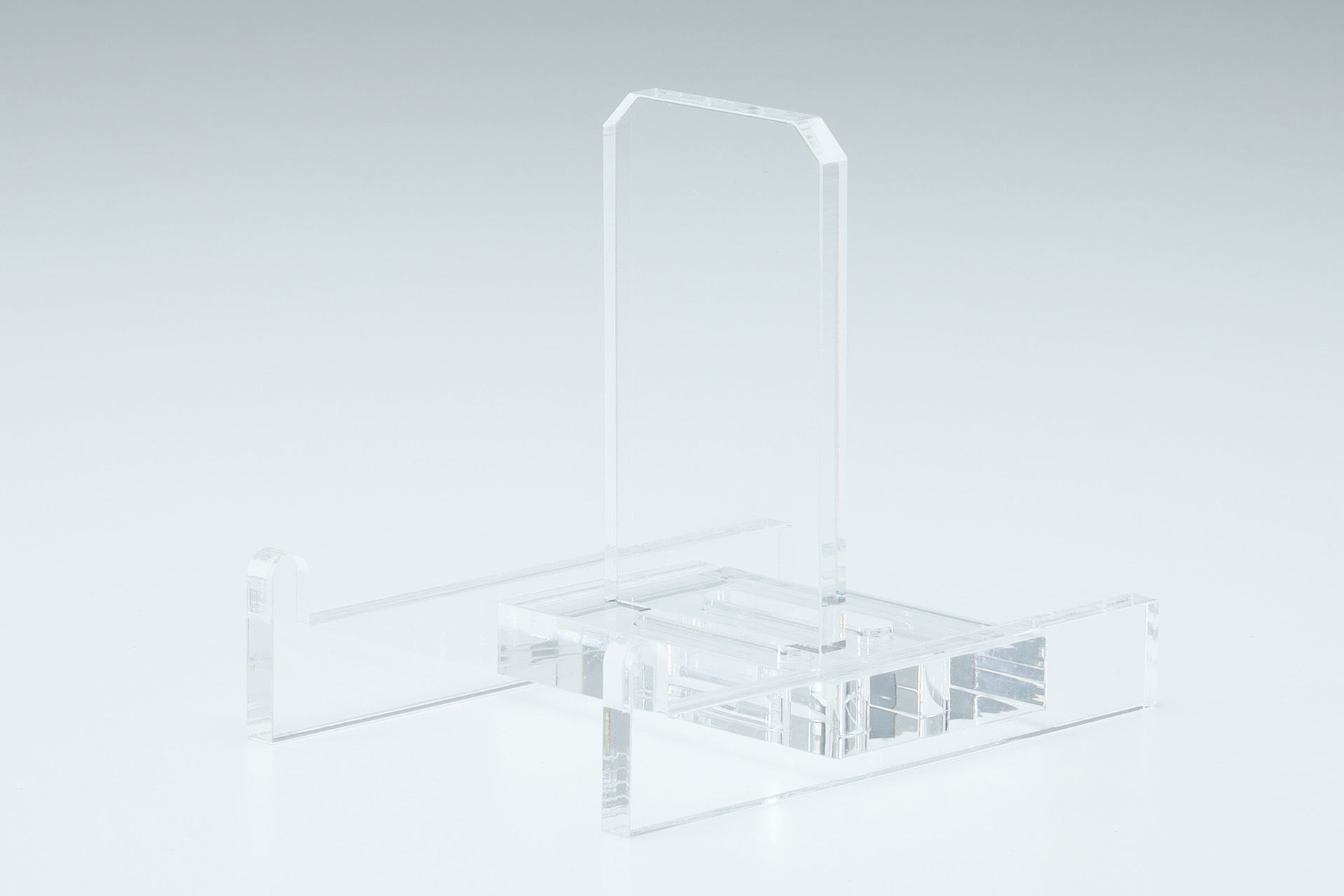Old-Kutani Irregular shaped Small Dish with Design of Plum and Bird(Edo Period)
Sold Out
It is the good old-kutani that is fascinated by the rich colors. The sharp, tough and thick design can be said to be one of the achievements of this period. It possesses the strength that can only be found in a period of growth in which technology was improved to meet the demands of feudal lords and wealthy merchants.
Inquiry
- Product Code
- 240601-1
- Period
- Edo Period
Early 17th century
- Weight
- 120g
- Diameter
- 13.7×11.9cm
- Height
- 2.8cm
- Bottom Diameter
- 8.5×7.5cm
- Description
- Paulonia Box
Acrylic Dish Stand
- Condition
- Good Condition
It meets the requirements of the excellent work with its strict shape, beautiful glaze, and good firing. There is a tiny chip at the edge, but it is still within the perfect condition category and does not interfere with viewing.
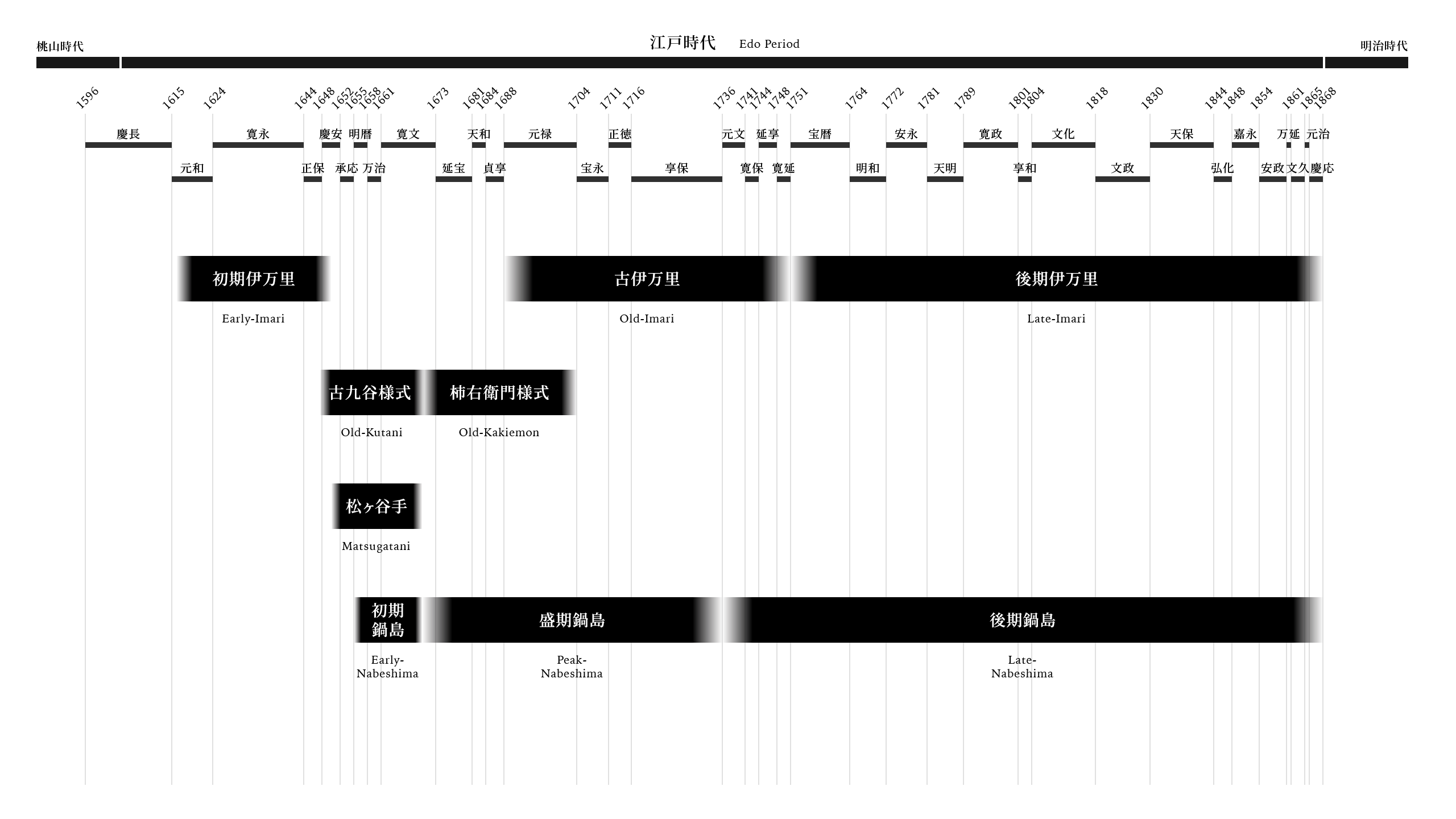
This complex shape is created using thread cutting molding. In contrast to the rational wheel throwing method used to reduce the number of steps required for mass production, the thread cutting molding used in 17th century hizen porcelain takes time and effort, but it reflects a high level of awareness in creating thin, high quality products in a variety of shapes.
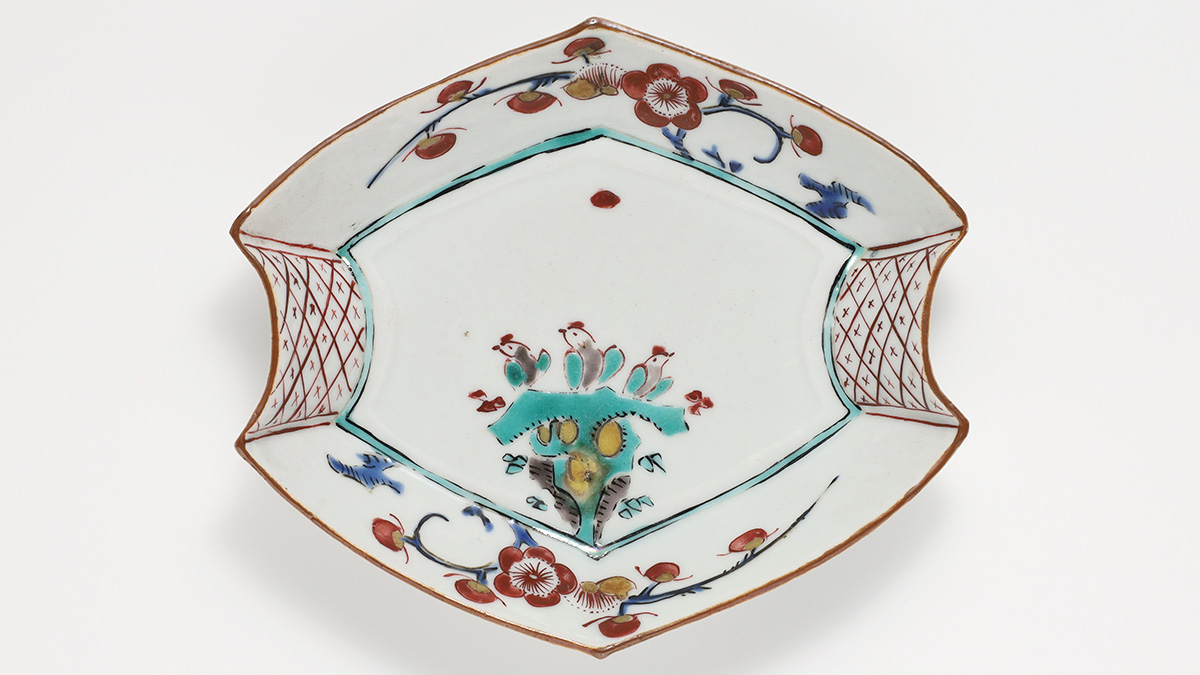
The theme is three cute baby birds in a nest. A bird’s nest is considered auspicious. It is considered a symbol of descendant prosperity because it lays many eggs and raises chicks. Birds tend to build their nests in places where there are a lot of people coming and going, so it also has the meaning of good luck, such as prosperous business.
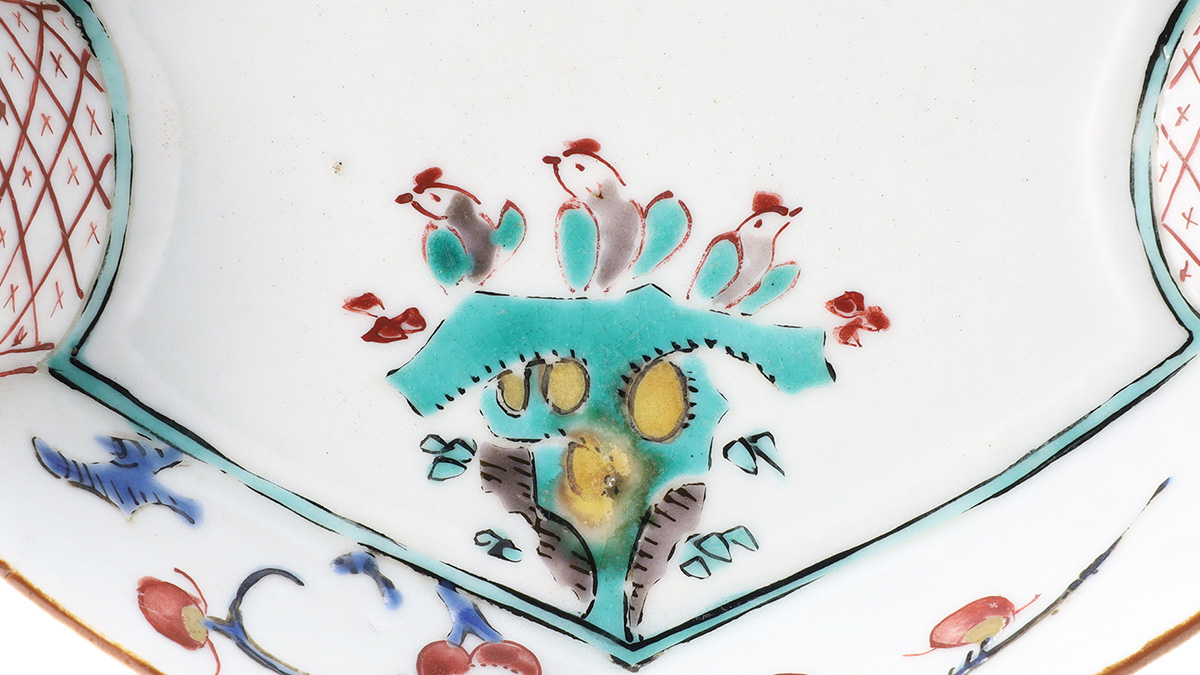
On the side, a bird design is drawn on the plum blossoms, and the blue color seen in excellent works is also used.
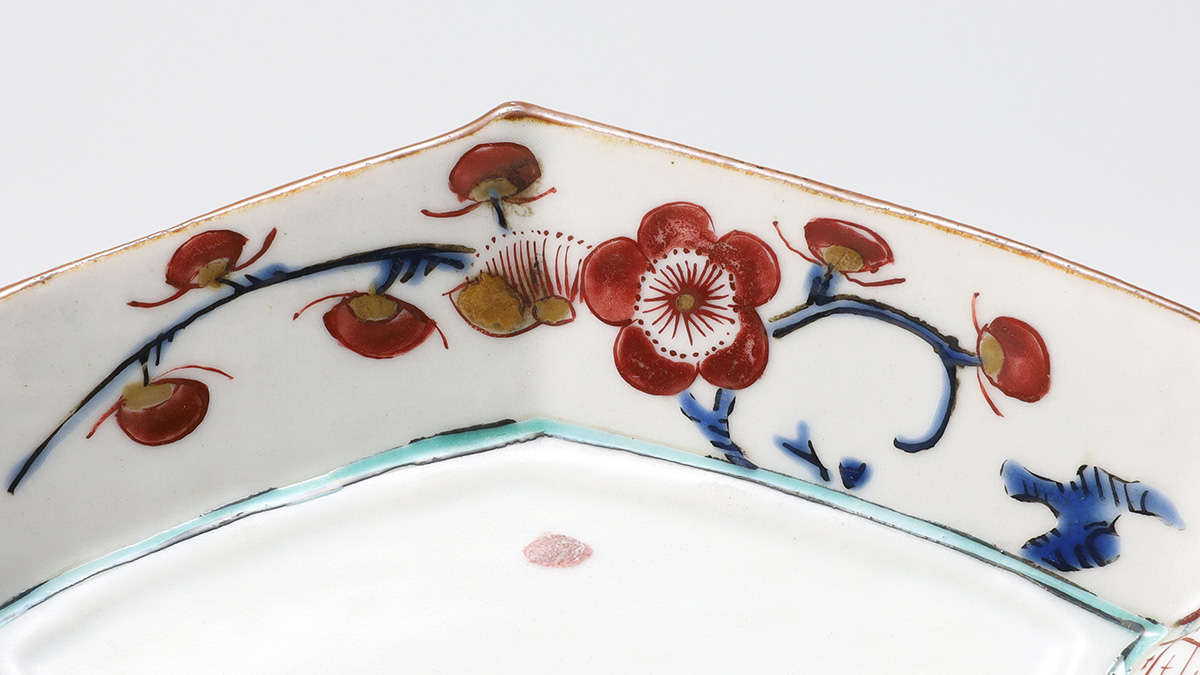
A technique is used to create a base that matches the shape of the vessel, and there is an inscription “Fuku” in the center of the bottom.
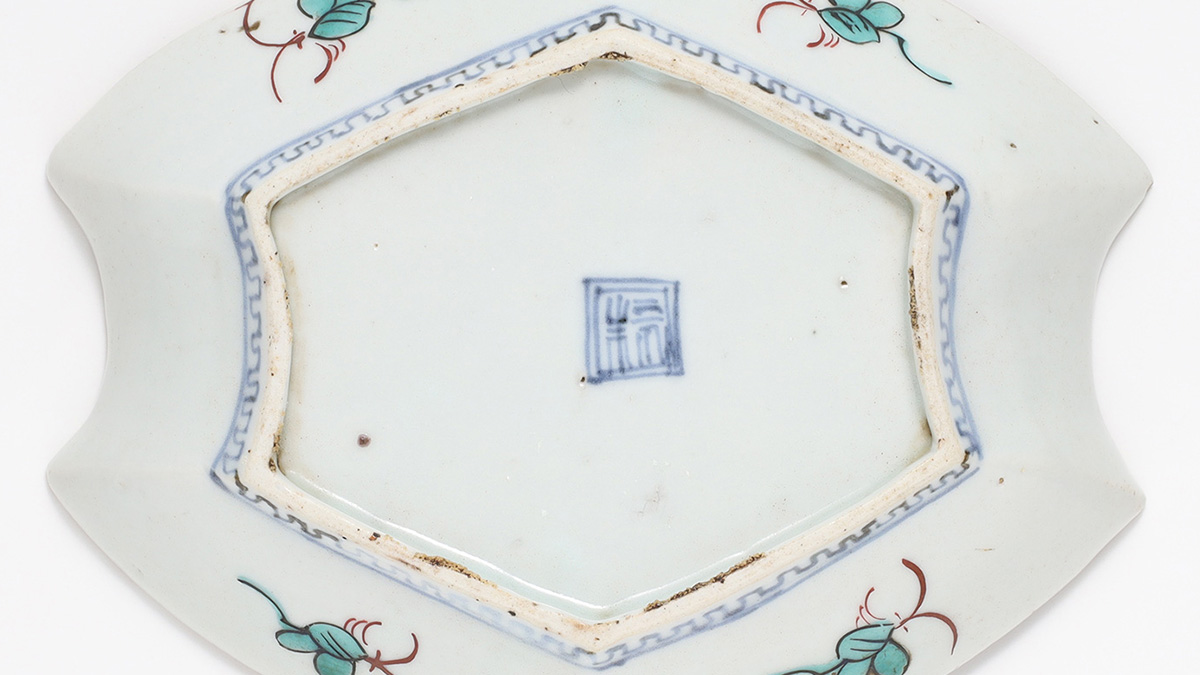
The life of a butterfly can be compared to that of a woman, as it goes from egg to larva to pupa, and then transforms into a beautiful butterfly. The sight of the statue flying high into the sky was favored by samurai families as a symbol of success in life, immortality, and resurrection.
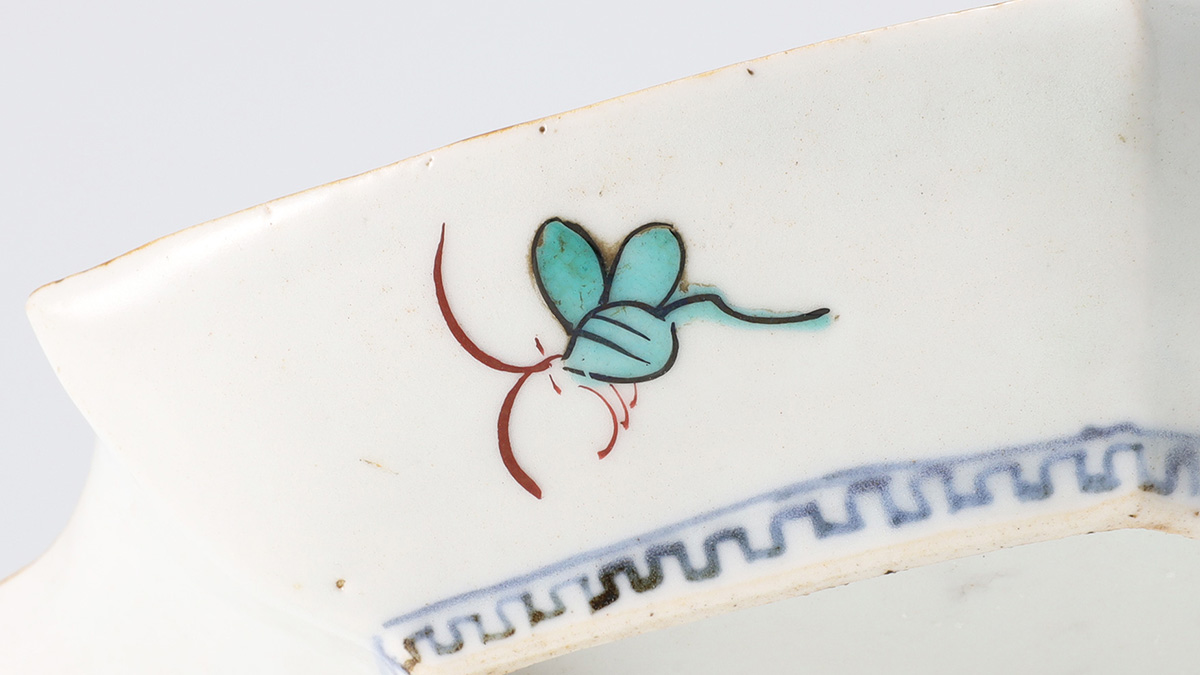
Old-Kutani
Old-kutani is a style of imari ware developed in arita, hizen(current saga prefecture), in the early edo period. In the 1640s and 50s, the overglaze enamels technique was introduced to imari ware, which before then was primarily blue and white pottery. Thanks to this dramatic change in technique, early-imari was developed into “Old-Kutani”. Overglaze enamels porcelain, which was originally created by imitating chinese ceramics, developed independently in japan, and in addition to the bright dishes designed for dinner parties, there were also a lot of works created for tea ceremonies and kaiseki. Some pieces were made with noticeably higher quality color painting technique, and it is thought that artists of painting may have contributed to making these pieces. The number of works with inscribed name grew dramatically, and a wide variety of inscribed names were used, such as “Kakufuku” or “Homare”. Since the dishes being made had become wider, in order to prevent the middle of the dishes from sagging during firing, a technique was developed that involved adding cone shaped supports made out of the same material as porcelain called “Hari”. Early-imari dishes had smaller bases, so there are very few pieces that show signs of the use of these “Hari,” other than large dishes. Iroe(overglaze enamels)old-kutani have a magnificent, powerful character, and due to their unique design style and thick, oil paint like coloring, for a long time it was commonly believed that they were produced in kaga(current ishikawa prefecture)- this is known as the kaga theory – but after several pieces of overglaze enamel pottery in the old-kutani style were found in the remains of old kilns in arita, the hizen theory, which claims that they were fired in arita, hizen(saga prefecture), became more prevalent, and this is the mainstream view today. Thanks to the strenuous efforts of hizen potters in the middle 17th century, these beautiful vessels still exist today, and rival jingdezhen porcelain, which is said to be the highest quality porcelain in the world.
https://tenpyodo.com/en/dictionaries/old-kutani/
Thread Cutting Molding
Thread cutting molding is a molding technique that does not use a potter’s wheel, which uses a clay mold, by slicing a clay plate to an appropriate thickness with a thread. It began around the 1640s, became common in the 1650s, and was established later than stamping molding. It is suitable for forming long dishes and other objects that are difficult to produce using stamping molding. In contrast to the rational wheel throwing method used to reduce the number of steps required for mass production, the thread cutting molding used in 17th century hizen porcelain takes time and effort, but it reflects a high level of awareness in creating thin, high quality products in a variety of shapes.



